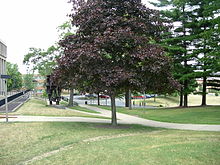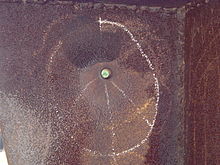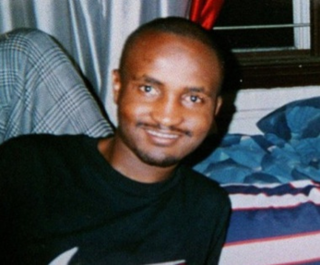
In the early hours of February 4, 1999, an unarmed 23-year-old Guinean student named Amadou Diallo was fired upon with 41 rounds and shot a total of 19 times by four New York City Police Department plainclothes officers: Sean Carroll, Richard Murphy, Edward McMellon, and Kenneth Boss. Carroll later claimed to have mistaken Diallo for a rape suspect from one year earlier.
"American Skin " is a song written by Bruce Springsteen, inspired by the police shooting death of Amadou Diallo by four NYPD police officers who were subsequently acquitted on all charges.
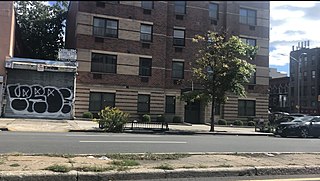
Crime rates in New York City have been recorded since at least the 1800s. The highest crime totals were recorded in the late 1980s and early 1990s as the crack epidemic surged, and then declined continuously from around 1990 throughout the 2000s. As of 2023, New York City has significantly lower rates of gun violence than many other large cities. Its 2022 homicide rate of 6.0 per 100,000 residents compares favorably to the rate in the United States as a whole and to rates in much more violent cities such as St. Louis and New Orleans.
Ousmane Zongo was a Burkinabé arts trader living in the United States who was shot and killed by Brian Conroy, a New York City Police Department officer during a warehouse raid on May 22, 2003. Zongo was not armed. Conroy did not receive any jail time but was convicted of criminally negligent homicide, received probation, and lost his job as a police officer.

Anthony H. Gair was an American attorney and advocate. He was a partner of the law firm Gair, Gair, Conason, Rubinowitz, Bloom, Hershenhorn, Steigman & Mackauf, which was founded by his parents in 1945. He looks for cases that are in the public interest. Notably, he represented the family of Amadou Diallo in a case that spurred reform of the New York City Police Department.
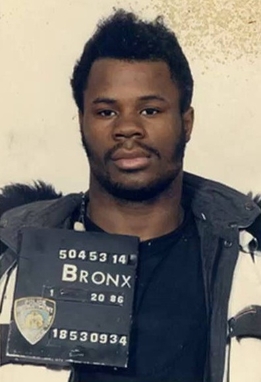
Larry Davis, later known as Adam Abdul-Hakeem, was a man from New York City who gained notoriety in November 1986 for his shootout in the South Bronx with officers of the New York City Police Department, in which six officers were shot. Davis, asserting self-defense, was acquitted of all charges aside from illegal gun possession. Davis was later convicted in April 1991 of a Bronx drug dealer's 1986 murder. In 2008, Davis died via stabbing by a fellow inmate.
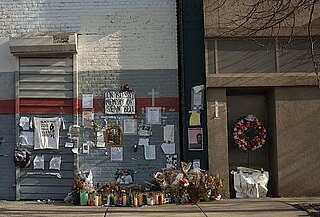
Sean Bell, an unarmed African American, was shot and killed by undercover New York City Police Department (NYPD) officers in the borough of Queens on November 25, 2006. Bell and two of his friends were shot when both plainclothes and undercover NYPD officers fired a total of 50 rounds. Bell's friends, Trent Benefield and Joseph Guzman, were severely wounded. The incident sparked fierce criticism of the New York City Police Department from members of the public and drew comparisons to the 1999 killing of Amadou Diallo. Three of the five detectives involved in the shooting went to trial on charges of first- and second-degree manslaughter, first- and second-degree assault, and second-degree reckless endangerment; they were found not guilty.
Edward Byrne was a police officer in the New York City Police Department who became well known in the United States after he was murdered in the line of duty.

The Harlem riot of 1964 occurred between July 16 and 22, 1964. It began after James Powell, a 15-year-old African American, was shot and killed by police Lieutenant Thomas Gilligan in front of Powell's friends and about a dozen other witnesses. Hundreds of students from Powell's school protested the killing. The shooting set off six consecutive nights of rioting that affected the New York City neighborhoods of Harlem and Bedford-Stuyvesant. By some accounts, 4,000 people participated in the riots. People attacked the New York City Police Department (NYPD), destroyed property, and looted stores. Several rioters were severely beaten by NYPD officers. The riots and unrest left one dead, 118 injured, and 465 arrested.
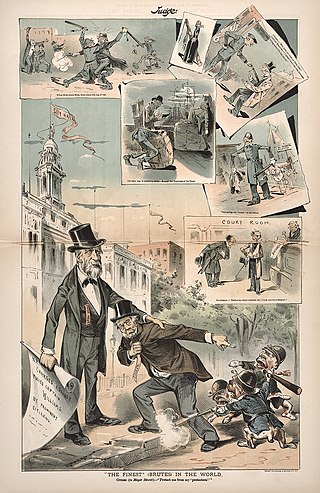
Throughout the history of the New York City Police Department, numerous instances of corruption, misconduct, and other allegations of such, have occurred. Over 12,000 cases have resulted in lawsuit settlements totaling over $400 million during a five-year period ending in 2014. In 2019, misconduct lawsuits cost the taxpayer $68,688,423, a 76 percent increase over the previous year, including about $10 million paid out to two exonerated individuals who had been falsely convicted and imprisoned.

Francis Crowley was an American murderer. His crime spree lasted nearly three months, ending in a two-hour shootout with the New York City Police Department on May 7, 1931, that was witnessed by 15,000 bystanders and received national attention. In 1932 he was executed in New York's electric chair.

The 1972 Harlem mosque attack occurred on April 14, 1972, when a New York City Police Department (NYPD) officer was shot and fatally wounded at the Nation of Islam Mosque No. 7 in Harlem, Manhattan, New York City, United States. The officer responded to a fake emergency call, but was shot and died from his wounds six days later. The incident sparked political and public outcry about mishandling of the incident by the NYPD and the administration of Mayor John V. Lindsay.
Randy Jurgensen is a former American NYPD detective, best known as the lead investigator into the murder of patrolman Phil Cardillo as well as his contribution as a consultant on various film and TV projects.

On December 20, 2014, Ismaaiyl Abdullah Brinsley shot and killed Rafael Ramos and Wenjian Liu — two on-duty New York City Police Department (NYPD) officers — in the Bedford–Stuyvesant neighborhood of Brooklyn. Brinsley then fled into the New York City Subway, where he killed himself. Earlier in the day, before he killed Ramos and Liu, Brinsley had shot and wounded his ex-girlfriend Shaneka Thompson in Baltimore after initially pointing the gun at his own head.
The murder of Brian Moore, a New York City police officer, took place on May 2, 2015, in Queens, New York, where he was shot. Moore died two days later at Jamaica Hospital Medical Center, at the age of 25. His partner, Erik Jansen, was shot at but escaped injury. Demetrius Blackwell was arrested in connection with the shooting, and was formally charged with first-degree murder, attempted first-degree murder, and other charges. On December 19, 2017, Blackwell was sentenced to life in prison with no chance of parole.

The killing of Ramarley Graham took place in the borough of the Bronx in New York City on February 2, 2012. Richard Haste, a New York Police Department officer, shot Graham in the bathroom of the latter's apartment. The 18-year-old Graham was in possession of marijuana when Officer Haste tried to stop him on the street. Graham fled to his grandmother’s house, and went into the bathroom to flush the marijuana. Officer Haste forced his way into the building, kicked down the front door and then broke down the bathroom where he shot Ramarley Graham to death. Haste could be seen on surveillance cameras smiling and laughing with the responding officers and detectives—the same men who would later testify they had told Haste that Graham had a gun. Haste claimed to believe Graham had been reaching for a gun in his waistband, but no weapon was recovered.

Twymon Ford Myers was an American member of the Black Liberation Army who was killed in a shootout with police in November 1973. Myers, described as a "leading member" of the BLA, had been placed on the Federal Bureau of Investigation's list of Ten Most Wanted Fugitives in September of that year for his alleged involvement in several robberies. He was also responsible for the 1972 killing of two police officers in New York, and was a suspect in other attacks on law enforcement in the area.

On March 25, 2024, New York Police Department (NYPD) officer Jonathan Diller was shot while conducting a traffic stop in Far Rockaway, Queens. He was subsequently transported to Jamaica Hospital Medical Center, where he died due to his injuries.
